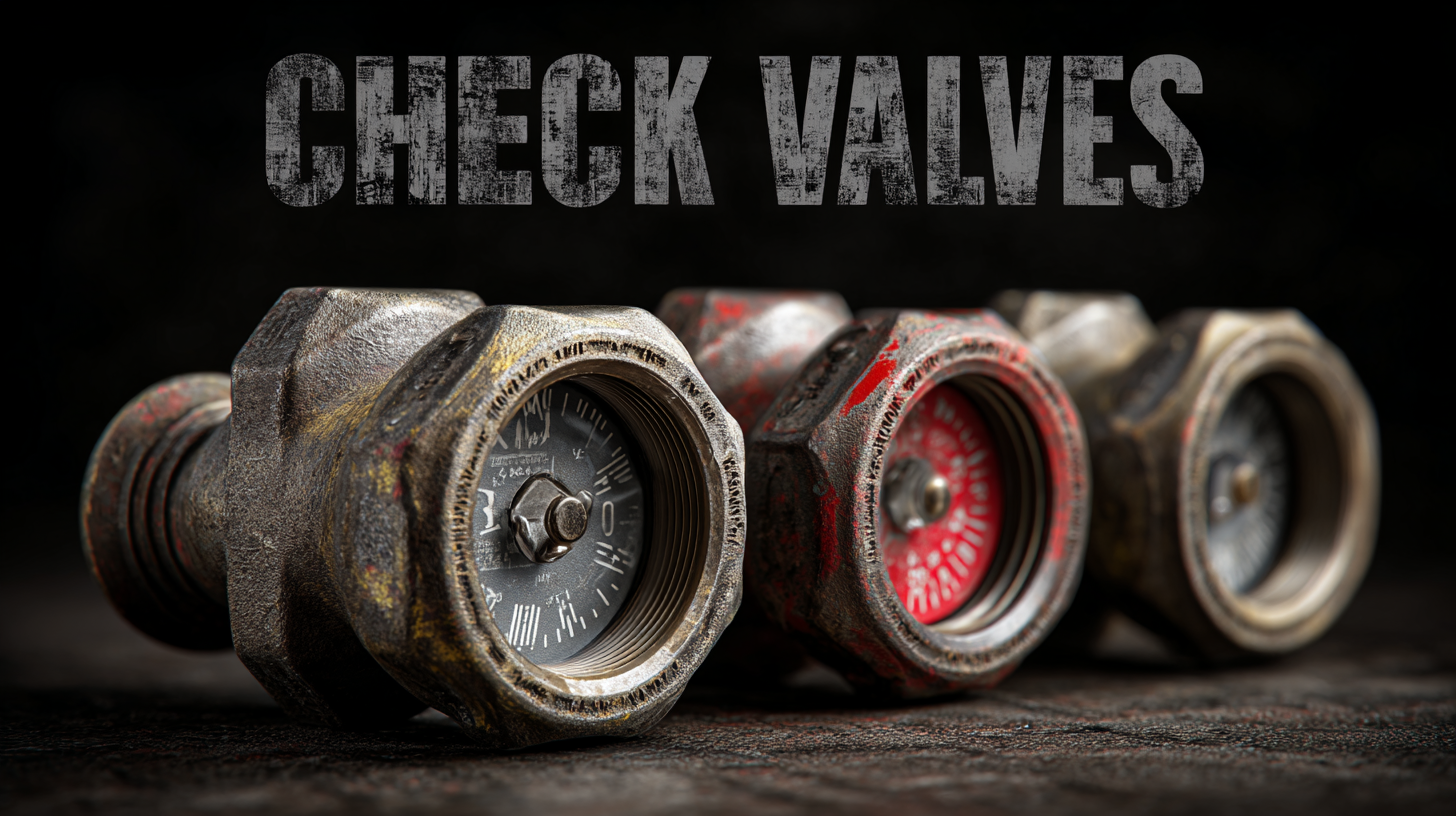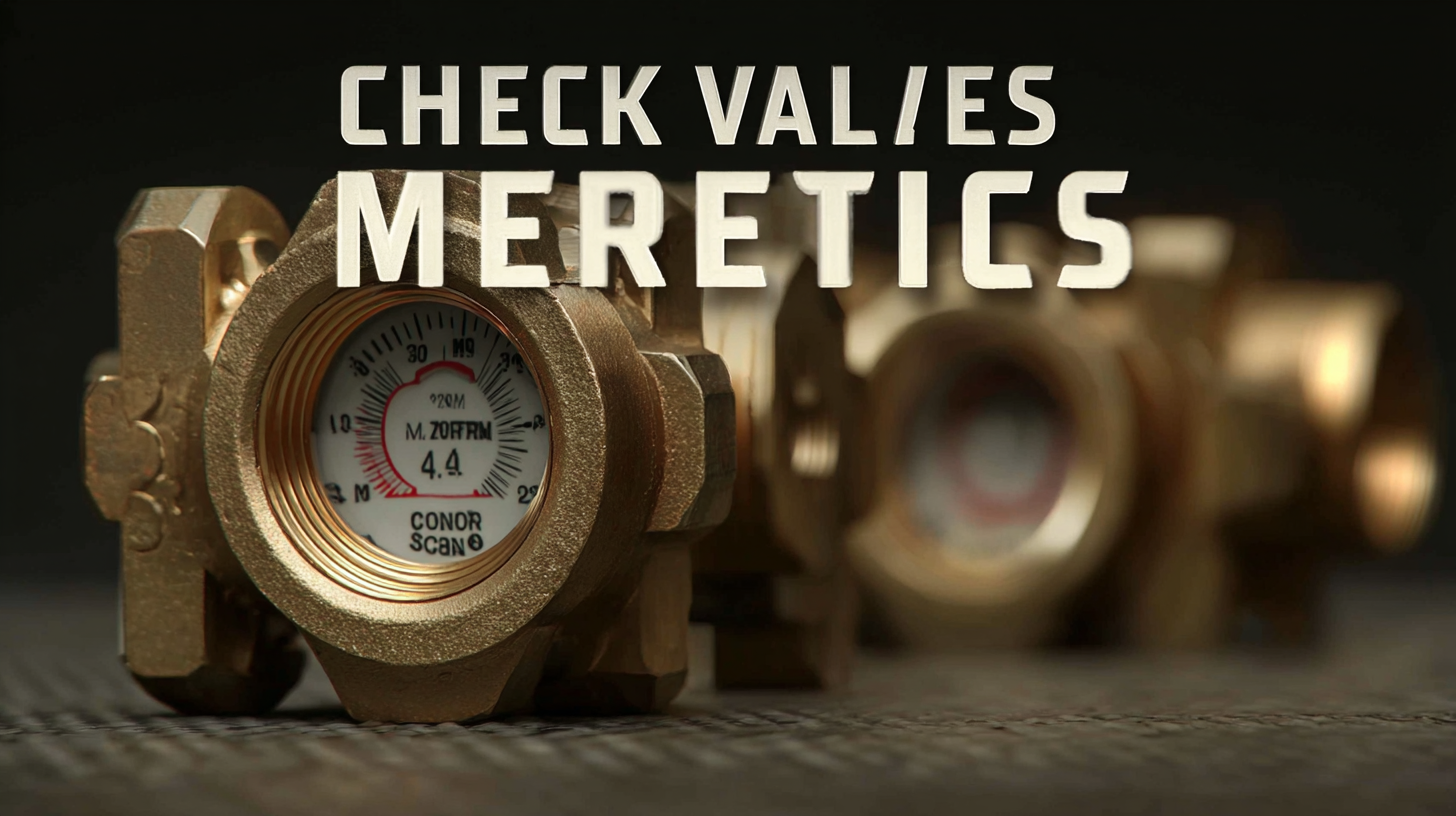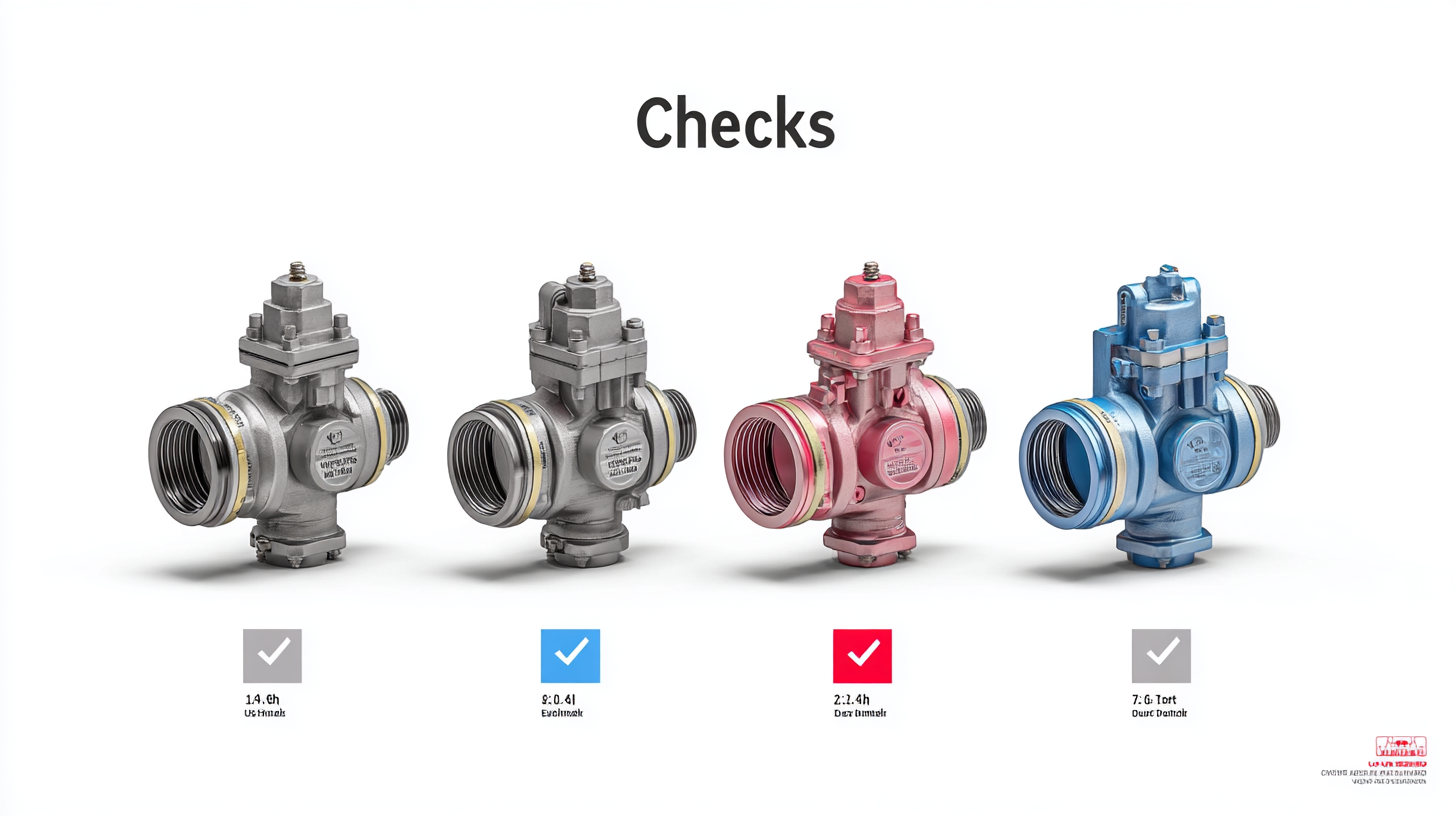Comparing the Top 5 Best Check Valves: Performance Metrics and Industry Insights for Optimal Selection
In the ever-evolving landscape of fluid dynamics, check valves play a pivotal role in ensuring efficient and reliable flow control across various industries. According to a comprehensive market analysis by Grand View Research, the global check valves market is projected to reach USD 6.36 billion by 2025, driven by the increasing demand for water and wastewater management solutions. As industries prioritize system integrity and operational efficiency, understanding the performance metrics of check valves has never been more critical. This blog aims to delve into the top five best check valves available today, offering insights into their functionality, material composition, and suitability for different applications. By comparing these vital components, we equip engineers and procurement managers with the knowledge to make informed selections that enhance system performance and longevity.

Characteristics of Different Types of Check Valves and Their Applications
Check valves are essential components in fluid systems, designed to prevent backflow and ensure unidirectional flow. There are various types of check valves, each suited for specific applications. The most common types include swing check valves, lift check valves, and ball check valves. According to a recent industry report by MarketsandMarkets, the global check valve market is anticipated to reach USD 13.2 billion by 2027, showcasing a growing demand across sectors such as oil and gas, water treatment, and HVAC systems.

Swing check valves are advantageous in applications where high flow rates are present, thanks to their low-pressure drop characteristics. A study conducted by the Hydraulic Institute highlighted that these valves can reduce energy losses by up to 20% when appropriately applied in pump systems. Conversely, lift check valves, which operate vertically, are ideal for high-pressure applications but may introduce moderate pressure losses, sometimes reaching up to 10%. This makes them suitable for water supply and sewage systems.
Ball check valves, noted for their compact design and quick response, are increasingly favored in marine and automotive industries. Data from the American National Standards Institute reports that these valves can provide a sealing capability exceeding 90%, ensuring greater reliability. Understanding the unique characteristics and performance metrics of each type of check valve is critical for optimal selection, as the right valve not only enhances system efficiency but also contributes to long-term cost savings.
Performance Metrics: Flow Rate, Pressure Drop, and Leakage in Check Valves
When selecting the best check valves for your application, it’s crucial to consider performance metrics such as flow rate, pressure drop, and leakage. According to industry reports, optimal flow rates for check valves typically range from 10 to 100 gallons per minute (GPM), depending on the specific application. High-performing check valves can maintain effective flow at minimal pressure drops, usually less than 5 psi, which ensures efficient operation in plumbing and industrial systems.
Tips: Always assess the required flow rate and system specifications before making a selection. A mismatched check valve can lead to inefficiencies and increased operational costs.
Leakage is another critical factor; industry standards indicate that the acceptable leakage rate for high-quality check valves should be less than 0.1% of the flow rate. Valves that exceed this threshold can lead to significant losses and increased maintenance needs. Choosing a valve with a proven track record in reliability and minimal leakage helps in achieving long-term performance and operational efficiency.
Tips: Regular maintenance and monitoring of the check valves can help in identifying leakage early, thus preventing larger issues down the line. Ensure you are familiar with the manufacturer's specifications for installation and maintenance to maximize valve longevity.
Material Considerations: Selecting the Right Check Valve for Your Environment
When selecting a check valve for your specific environment, material considerations are paramount. Check valves are commonly made from a variety of materials including brass, stainless steel, PVC, and rubber, each offering distinct advantages depending on the application. For instance, stainless steel is renowned for its durability and resistance to corrosion, making it ideal for harsh industrial environments or where high pressure is involved. On the other hand, PVC check valves are lightweight and resistant to chemicals, making them suitable for water treatment facilities and other applications involving corrosive fluids.
Additionally, the operating temperature and pressure of your system will influence material selection. High-temperature environments may require specific polymers or metals that can withstand greater stress without deforming or failing. In contrast, softer materials might suffice for lower-pressure scenarios or where minimal flow restriction is desired. It’s also crucial to consider factors such as compatibility with the fluid being transported, as improper material choices can lead to failure or leaks over time. By carefully evaluating these material properties, you can ensure that the check valve you select will perform optimally in your application.
Comparing the Top 5 Best Check Valves: Performance Metrics and Industry Insights for Optimal Selection
| Check Valve Type | Materials | Max Pressure (PSI) | Temperature Range (°F) | Suitable Fluids | Flow Coefficient (Cv) |
|---|---|---|---|---|---|
| Swing Check Valve | Cast Iron, Stainless Steel | 150 | -20 to 200 | Water, Oil | 6.0 |
| Lift Check Valve | Brass, PVC | 200 | 0 to 180 | Air, Water | 4.5 |
| Diaphragm Check Valve | EPDM, Polypropylene | 100 | -22 to 140 | Chemicals, Corrosives | 3.0 |
| Ball Check Valve | Stainless Steel, PVC | 250 | -20 to 180 | Water, Oil, Gas | 10.0 |
| Spring Check Valve | Brass, Stainless Steel | 300 | -40 to 220 | Gas, Water | 7.5 |
Industry-Specific Insights: How Different Sectors Utilize Check Valves
Check valves, crucial in various industrial applications, serve the primary function of allowing fluid to flow in one direction while preventing backflow. Different sectors have unique requirements that drive their selection of check valves based on performance metrics and critical insights. In the water treatment industry, for instance, these valves are integral to maintaining pressure and ensuring efficient flow without contamination risks. Durable materials are often prioritized here to withstand corrosive environments, while quick response times are vital to safeguard systems from surges.

In the oil and gas sector, check valves are employed to manage flow in pipelines and storage systems. Here, the focus is on high-pressure ratings and minimal leakage. Valves must be robust enough to handle harsh conditions and prevent potentially hazardous spills. Industries like pharmaceuticals and food processing place further emphasis on hygiene, necessitating valves that can be easily cleaned and meet stringent regulatory standards. Understanding these sector-specific requirements allows for optimal check valve selection, ensuring reliability, safety, and efficiency in diverse applications.
Common Problems and Solutions: Ensuring Optimal Functionality in Check Valves
Check valves play a crucial role in various fluid systems, ensuring that flow only occurs in one direction. However, like any mechanical component, they can encounter issues that hinder their performance. One common problem is the accumulation of debris or sediment, which can prevent the valve from sealing properly. Regular maintenance and inspection can help mitigate this risk, ensuring that any blockages are cleared and that the valve operates smoothly.
Another frequent issue is the degradation of gasket and seal materials over time, which can lead to leaks. It's essential to select a check valve made from durable materials suited for the specific application, especially in environments exposed to harsh chemicals or extreme temperatures. Utilizing valves with replaceable seals can also enhance long-term functionality, making them easier to maintain without the need for complete valve replacement. By addressing these common problems proactively, users can ensure optimal performance and longevity for their check valves.
